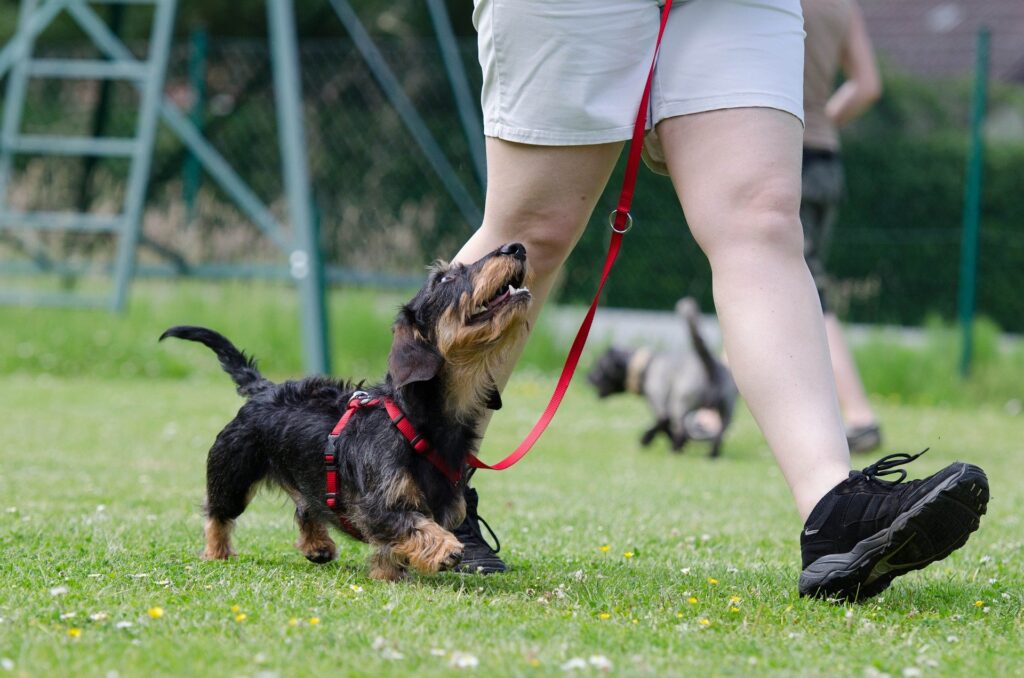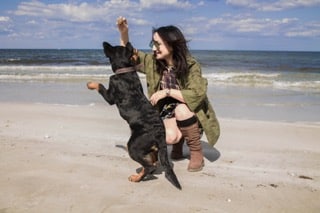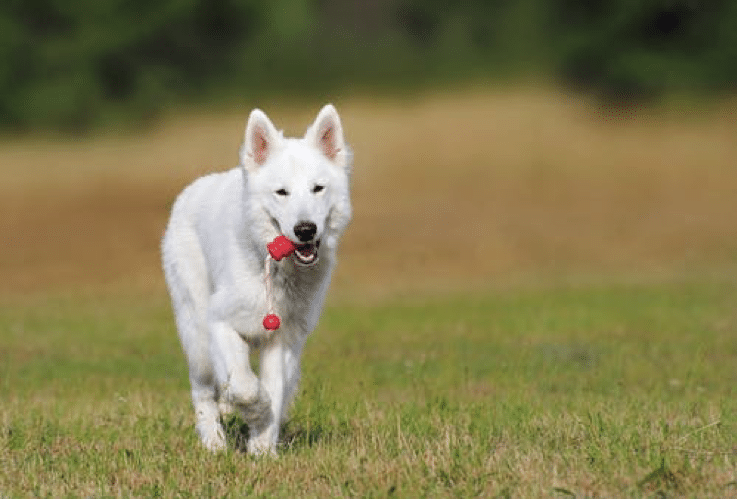



This post is part of a continuing series on preparing your pet for therapy animal work.

Pet Partners knows that training your animal to be a part of a registered therapy animal team can feel like a very big endeavor. To make sure that preparing your animal for the world of AAI isn’t too daunting, we’ve talked to professionals in the field to outline a few core concepts you can use to promote training success.
First things first: Pet Partners supports using positive training techniques when training all eligible therapy animal species. Positive training methods emphasize an understanding of how behavior works, and rely on humans reinforcing positive behaviors and ignoring or redirecting undesirable behaviors to achieve training goals. Learn more about this in our post on positive training.

Before your animal is ready to begin training, they need to be properly prepared and socialized. Melissa Winkle, OTR/L, owner of Dogwood Therapy Services Inc., president of Animal-Assisted Intervention International, and Pet Partners licensed team evaluator, emphasizes the importance of preparation. She explains that training and preparation are often categorized together, but that understanding the differences between the two concepts is key to successful training.
The purpose of socialization is to gradually introduce your animal to various people, situations, places, and objects so that your animal has the opportunity to build positive associations with them. Pamela Dennison’s book, You Can Train your Dog: Mastering the Art & Science of Modern Dog Training[1], provides basic tips on socializing puppies, including these:
Pet Partners registers nine different types of animals, and there are different methods for socializing different species. Leslie Stewart, PhD, associate professor of counseling at Idaho State University who teaches incorporating AAI into counseling practice, and a member of the Pet Partners Human-Animal Bond Advisory Board, explains how she approaches socializing and training rabbits:
“I don’t ‘train’ my bunnies to do any particular tricks or respond to any ‘commands’. Instead, I work towards helping to socialize them to humans, human contexts, and travel. The biggest difference I notice with bunnies as compared to other species I share my life with is understanding how they perceive the world and understanding how their senses and social behaviors/interactions differ from ours. For example, they are behaviorally and physiologically much more like horses than they are dogs or cats…they are big sticklers for bunny society ‘politeness’ and boundaries, which can lead to lots of misunderstandings. Handlers should really do their homework about bunny etiquette!”
Understanding the appropriate ways to socialize your animal go hand-in-hand with our next concept, fostering a trusting relationship.

A strong, trusting relationship with your animal is paramount to success in training. Dennison dispels the myth that humans must be dominant over a dog in order to get the most out of training:
“I feel the use of the word dominant clouds our perceptions of how to train dogs. What we are really trying to accomplish is compassionate leadership. Leadership between humans and dogs is about boundaries and acceptable behaviors for dogs living with humans. Adding compassionate understanding in training clarifies the roles in our relationship. The human, as leader, guides the dog, sets boundaries and teaches what is acceptable—with compassion—for the dog’s long-term well-being.”
Modern training is based on partnership, not dominance. Dr. Risë VanFleet is the founder and director of the International Institute for Animal Assisted Play Therapy®, and co-author of Animal Assisted Play Therapy,[2] winner of the 2018 Maxwell Award for Best Book on the Human-Animal Bond from the Dog Writers Association of America. She highlights the importance of relationship building through giving your animal true choices, taking the time to just “hang out” with your animal, and participating in lots of play.
Amy Johnson, Director of the Center for Human Animal Interventions at Oakland University, adds:
“Trust comes from knowing what to expect and dogs know what to expect from us because we are consistent. The new language movement for training (dogs anyway) is to respond to cues rather than listen to commands. Listening to commands puts us at the top of the hierarchy and when working with animals, but [teaching animals to respond to cues] is more bi-directional than that and fosters a stronger relationship.”
Again, trust building may look different for different species. Stewart explains:
“Since bunnies are natural prey for us, I find that daily trust building is crucial to our continued bond and successful adaptation to new environments…I spend a lot of time at home just sitting in the floor with them and allowing them to interact with me naturally.”
If you view your relationship with your animal as a partnership and take care to understand what makes your animal ”tick,“ you’ll lay the foundation for a successful training experience.

Just as it’s important for us humans to take regular breaks from our work, it’s important to ensure that we are listening to our animals and giving them breaks as necessary to prevent burnout during training. Positive training is essentially always happening (for us humans, at least). On our end of the leash, we need to be attuned to undesirable behaviors that need to be ignored, as well as to desirable behaviors that need to be reinforced. When training for a behavior that may not be easy to reinforce in an organic situation, such as “shaking” a client’s hand, don’t overdo it! VanFleet explains:
“For any course on training, I think that some kind of guidance on how much is important. A few periods of short (five minutes) training per day are usually all that’s needed to build skills.”
Taking breaks boosts productivity in the human world, and the same goes for training your animal. Knowing when to pause your session will ensure that your animal doesn’t get frustrated and burned out, which will maintain the relationship that you worked so hard to build.

Imagine you’re a first grade teacher. You’re probably a pro at interacting with young children and have a lot of tools for teaching basic vocabulary and elementary math skills. If the principal came into your classroom and expected you to teach Shakespeare and calculus to college students, it just wouldn’t make much sense. The same goes for training your animal. When you’re training, focus on the skills that you and your pet need to be successful as a therapy animal team and what you expect your animal to be able to handle during a visit. Will they need to sit quietly for long periods of time for a Read With Me™ session, or play fetch with individuals working on coordination and gross motor skills? Make the most out of your training by spending time working on skills that are most relevant.

Animal health and well-being are a top priority for Pet Partners. Our standards of practice and core philosophy of YAYABA (You Are Your Animal’s Best Advocate) highlight the importance of animal well-being in every step of becoming a registered therapy animal team, from training to visiting. Check out our post on mental health in therapy animals for suggestions on how to maintain your animal’s mental health.
Special thanks to these AAI professionals for their help with this article:
Are you interested in learning more from AAI professionals? Recordings of our Facebook Live series of Meet the Leader in AAI events are available on our YouTube channel.
You Can Train your Dog: Mastering the Art & Science of Modern Dog Training by Pamela Dennison.
Animal Assisted Play Therapy by Risë VanFleet and Tracie Faa-Thompson.
What Type of Training Do Therapy Dogs Need? by Risë VanFleet
[1] Dennison, P. (2015). You Can Train Your Dog: Mastering the Art & Science of Modern Dog Training. Blairstown, New Jersey: Shadow Publishing.
[2] VanFleet, R., & Faa-Thompson, T. (2017). Animal Assisted Play Therapy. Sarasota, FL: Professional Resource Press.